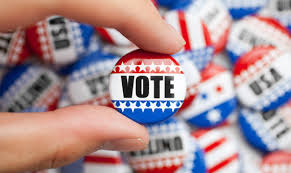Stations’ Election Ad Upside Keeps Growing

The extraordinary fruits of broadcast TV sales labor sprang to light during a TVB Forward panel session on political advertising Thursday, which examined not only the current cycle, but 2020 as well.
Steve Passwaiter, VP-GM of Kantar Media/CMAG just increased his 2018 projection for spot political spending to $2.65 billion from an original estimate of $2.4 billion. He estimates total political spend at $4.425 billion in the current political cycle.
But he may end up increasing it again. “I can tell you offhandedly that I think there’s upside in this number. Broadcast could do better than this,” Passwaiter said.
Looking at governor race spending, Passwaiter’s data shows that:
- Florida spending towers over every other state, with $116.1 million spent on the primaries and an expected $12.5 in the general election.
- Illinois spending is in the No. 2 position, with $39 million and $44.8 million, respectively.
- Ohio comes in third, with $12 million and 45.8 million.
- Michigan is expected to bring in $28 million and $21.7 million.
- And in Nevada, the numbers are $9.4 million and $28.3 million.
California, Minnesota and Missouri are also garnering remarkable political results. “Over 40% of the money that’s going to St. Louis is for people who are running for office in Illinois,” Passwaiter said. “J.B. Pritzker is outspending Claire McCaskill in St. Louis,” he added. Pritzker is a Democratic contender for the Illinois governor’s seat, and McCaskill is a Democratic senator from Missouri.
The next election cycle will start on Nov. 7 at 12:01 a.m., Passwaiter said. “We’re projecting that a lot of Democrats will be running for President.”
Passwaiter expects a very competitive cycle in down-ballot races next time around. And look for greater use of addressable TV. “The political agencies are really fired up about addressable TV, because it solves a number of issues for them when it comes to waste.”
2020 won’t be a repeat of 2016, he predicted, noting how disappointing the last presidential cycle was, given Donald Trump’s reliance on generating news coverage rather than spending money on a lot of advertising.
“Trump can’t run the same campaign he ran in 2016, which I know makes all of you really happy. Because nobody wants to relive that nightmare,” Passwaiter told the crowd. “I think we’ll see a much more normalized campaign in 2020.”
A group of politically focused panelists that spoke after Passwaiter’s presentation concurred with that prediction. “The Trump campaign will be a different animal, because it will be funded differently. It won’t be all his money. There will be an immense field operation. The more interesting thing to watch over 2019 is [that] the Democratic field will be just enormous,” said Mike Slanker, partner and founder of the political consultancy November Inc.
“I think we’re already in the 2020 cycle,” said Fredereka Schouten, a reporter with USA Today. “Trump went on the trail within weeks or months of winning. There have been nonstop campaign rallies. It helps draw in small donors; it helps reinforce the message. 2020 has been upon us for some time.”
The importance of TV to political campaigners seemed clear. As Slanker put it: “At the end of the day, if you really want to shape hearts and minds, you still need television.”
Slanker noted that in every political cycle there’s talk about using more digital. “That’s important for frequency. But if you want to persuade people, you still need that big screen; you still need their focus. It’s critical to move people to action.”
“We’re spending in governor’s races and senate races 80%-85% of our money on television,” added Bradley Perseke, partner in GMMB, another political consultancy. Referring to the high prices in some markets, he added: “You could price yourself out of the market, but it’s still important.”
Slanker said that his company’s surveys show that “national cable news has become a little bit more entertainment.” People are getting their news from newspapers a little less, and bits and pieces from online, he said. “But folks are tuning into their local news to find out what’s going on. They’re tuning in to get actual hard news. And whether it’s true or not, they believe it to be true.”
The session’s moderator, Dennis Welch, a political editor and reporter at KTVK Phoenix, quizzed the group about Super PACs (political action committees), which became a force to be reckoned with in 2010.
“Super PACs have changed a little. People didn’t know what to do with them when they first came into being,” said Schouten. “Now they’ve narrowed down to a handful of Republican Super PACs and a handful of Democrat Super PACs. There was a new one in the Arizona race, but when their financial disclosure came out we realized it was just the same group of Democrats that were behind national advertising.
“It’s a world controlled by 12 people spending a lot of money,” added Schouten, in speaking of Super PACs.
Passwaiter’s estimates show that digital is gaining strength in political races. It will represent 18% of all political spend this year, or $800 million. But individual TV stations’ ability to hop onto that bandwagon is limited.
For digital campaigns, “we’re going through programmatic and putting together a schedule statewide and targeting audiences by behavior — segments you can’t get through one station or a combination of stations in a state. And we’re paying them a $20 CPM. So it’ll be hard, if not impossible,” said Perseke.
Digital inroads could possibly be made in small ways, added Slanker. “With OTT [over the top] and preroll, maybe you could make it affordable and easier to buy.”
































Comments (0)